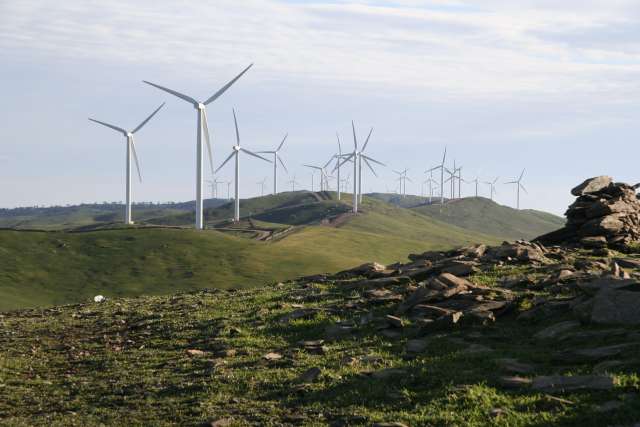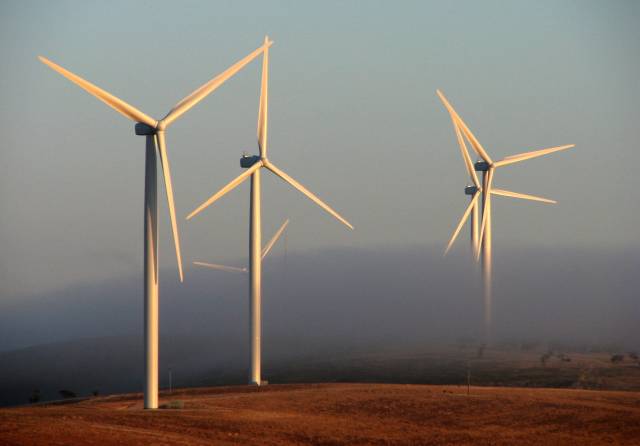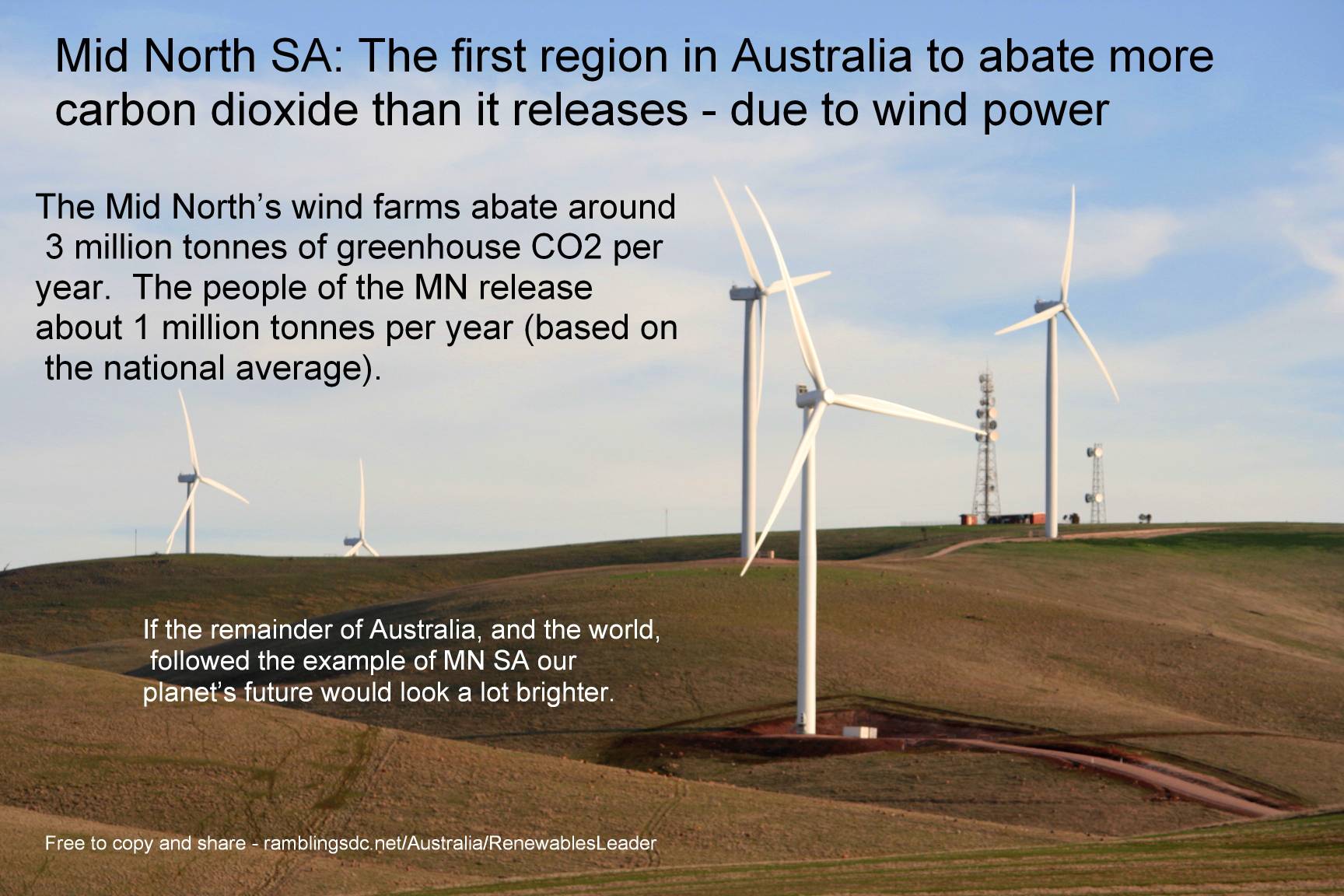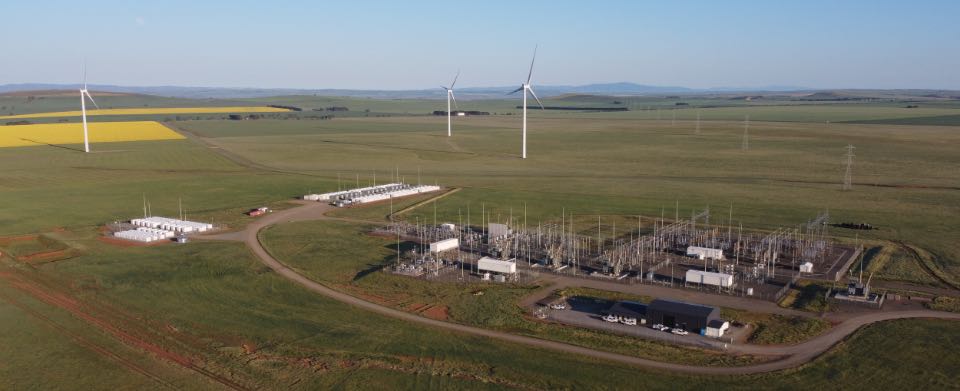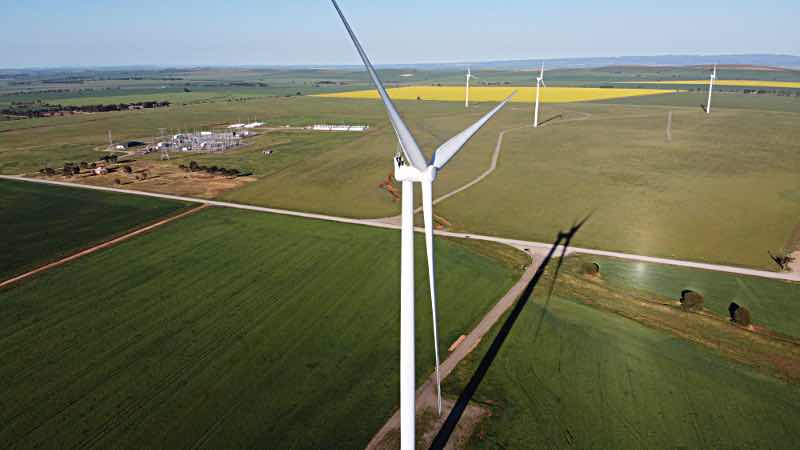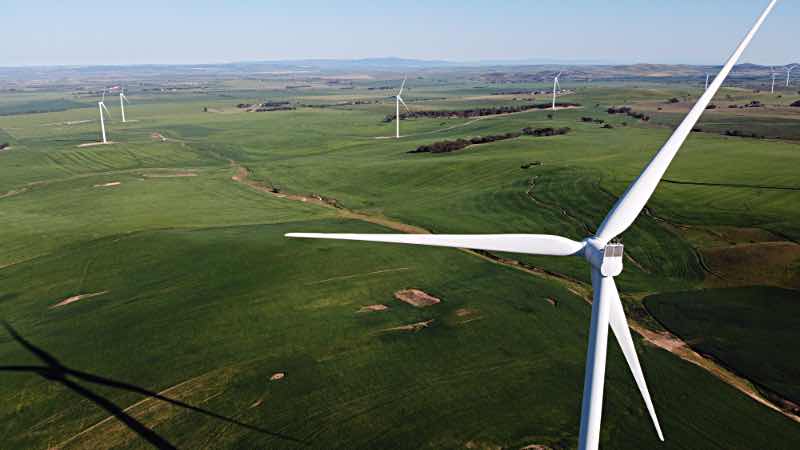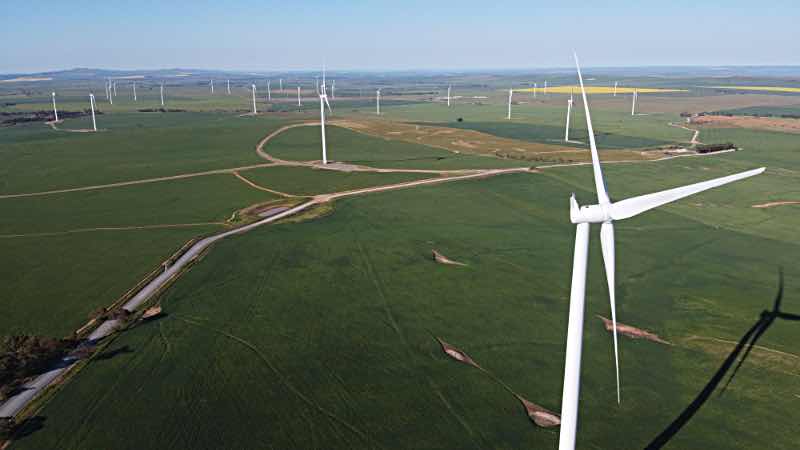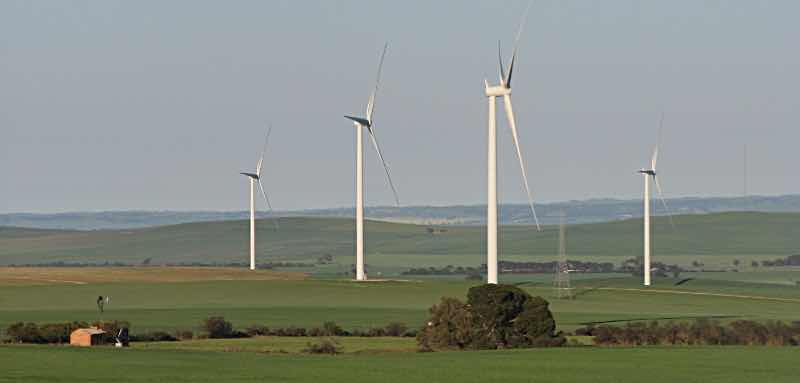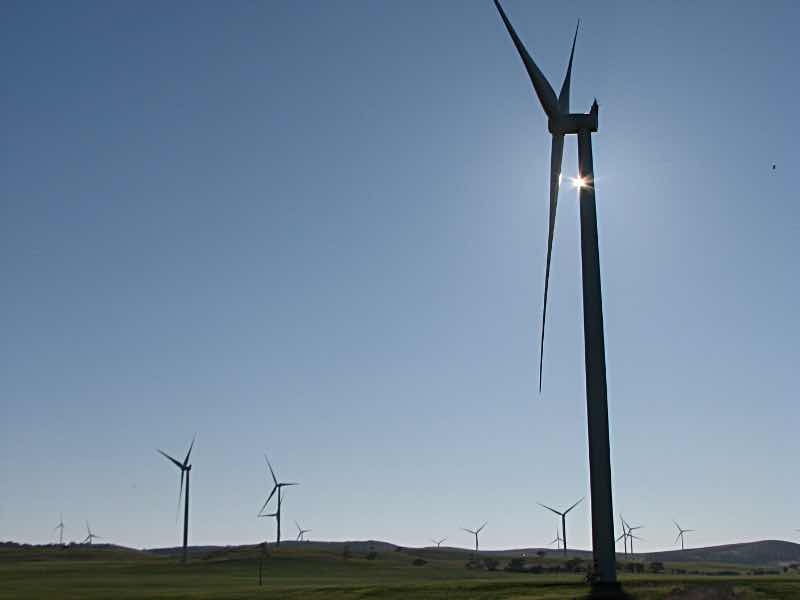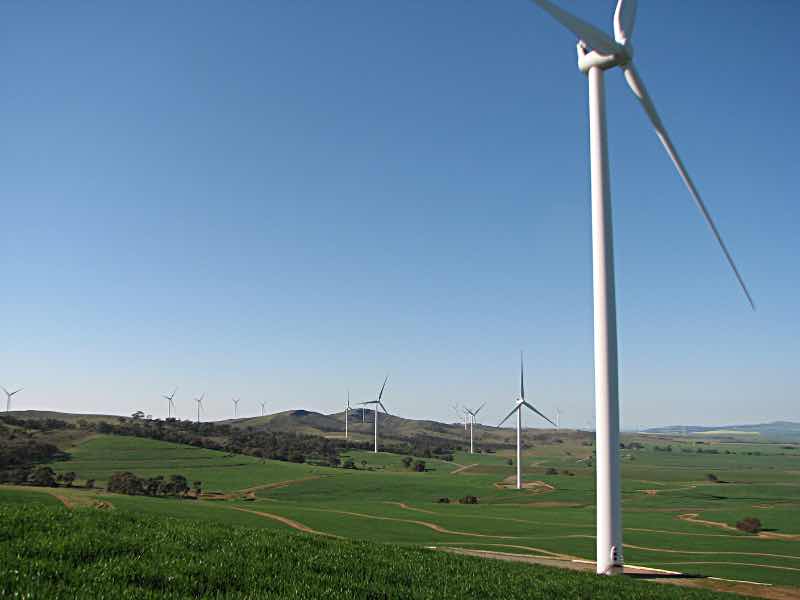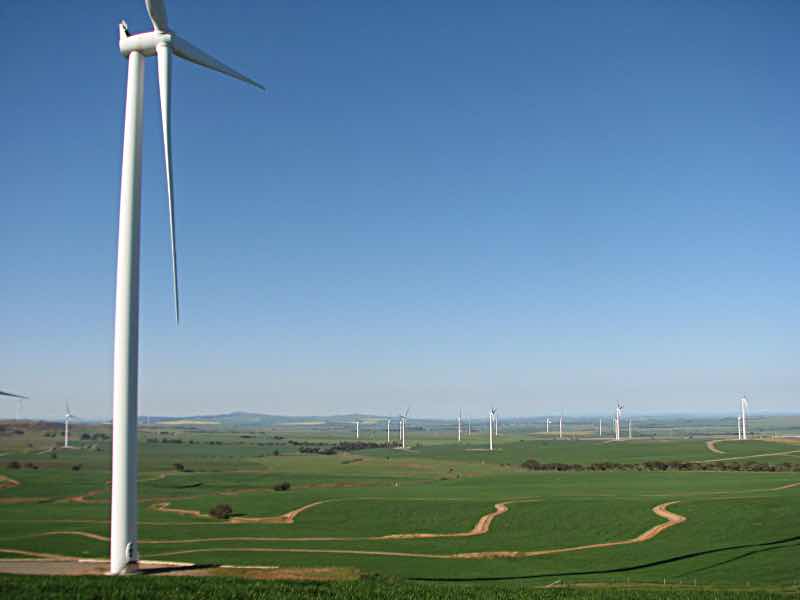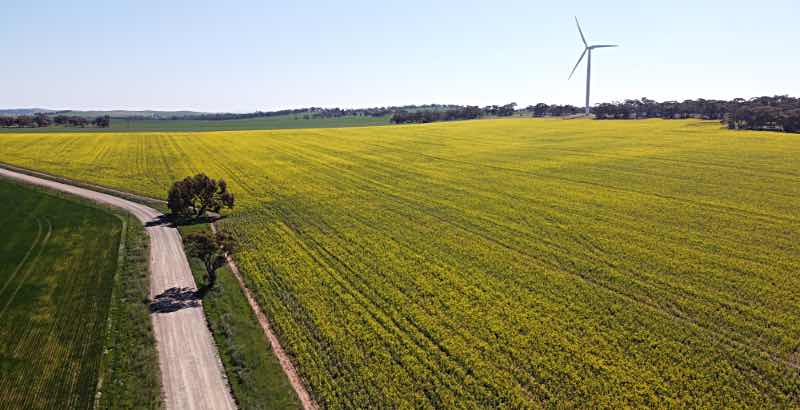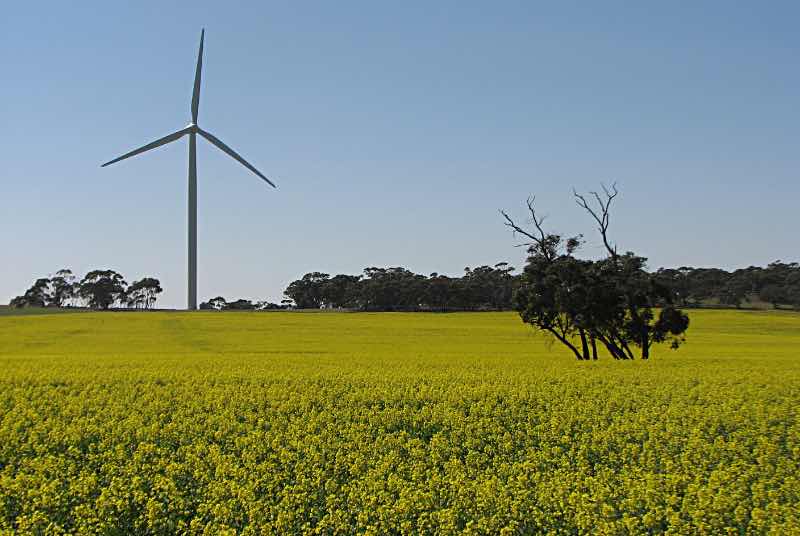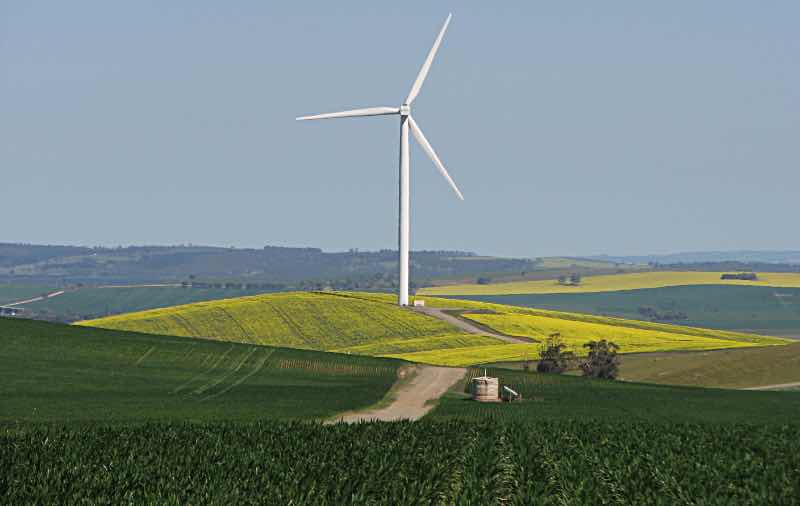A wonderful achievement
Mid-North South Australia is carbon-negative
The Mid-North is probably the first region in the nation to abate more carbon than it releases into the atmosphere and this is due mainly to wind power!Total emissions for Australia (about 2014) were 538 million tonnes of greenhouse gasses per year, so on average each Australian is responsible for 23 tonnes each year. Figuring on a population of 43,000 for the Mid-North we can calculate the region's annual emissions at around one million tonnes.
On the other side of the equation our wind farms abated something like three million tonnes of greenhouse carbon dioxide each year by replacing fossil fuel-generated electricity with clean, renewable electricity.
All those who have had some part in supporting the construction of these environmental assets deserve a pat on the back. They will be able to tell their grandchildren that they did their bit to minimise the climate change disaster.
Data sources:
- Total annual per-capita emissions for Australia were published by the Department of the Environment in their National Greenhouse Inventory, December 2019 via
Wikipedia, 22-25 tonnes.
- Population of the five council districts that make up the Mid-North (Clare & Gilbert Valleys, Goyder, Northern Areas, Pt Pirie Regional, Wakefield Plains) were taken from Australian Bureau of Statistics figures; total 42,726; so approximate annual emissions would be expected to be between 940,000 and 1,070,000 tonnes.
- Abatement per megawatt-hour generated by wind farms was from a report by Sinclair Knight Merz, for the Clean Energy Council; 1.02 tonnes CO2 in South Australia.
- The two Snowtown Wind Farms, stage 1 and 2, alone abate 1,045,000 tonnes of CO2 each year.
- Bluff Range
- 53 MW
- Brown Hill Range
- 95 MW
- Clements Gap
- 57 MW
- Hallett Hill
- 71 MW
- Hornsdale
- 315 MW
- North Brown Hill
- 132 MW
- Snowtown, stages 1 and 2
- 369 MW
- Waterloo, stages 1 and 2
- 129 MW
- Willogoleche
- 119 MW
The calculations, for those who are interested
Assuming a conservative capacity factor of 30%, one can calculate an annual generation of about 3,500,000 MWh/year (1,340 × 0.3 × 24 × 365 = 3,521,520), abating about three and a half million tonnes of CO2 per year (3,521,520 × 1.02 = 3,591,950).
So the amount of abatement is more than three times the amount of emissions that the population of the Mid-North would be expected to be responsible for.
Mid-North SA, with its wind farms, is showing what can be done
At the end of 2015 Australia had about 3 GW of installed solar PV power and about the same amount of installed wind power. There was also some bio-gas energy – mainly from land fill methane recovery – very little solar thermal, geothermal and wave energy, and no tidal energy development.Australia's wind farms were generating about 9000 GWh of electricity each year and its solar was generating around half that (solar PV has about half the capacity factor of wind turbines).
The big new Snowtown Stage 2 Wind Farm, which I can see from near where I live, had recently been completed. It added 270 MW to Australia's renewable energy generating capacity and increased South Australia's installed wind power to 1475 MW; close to half of Australia's total at the time. In SA 890 MW, 60% of our wind power, was in the Mid-North.
The Mid-North's wind farms reduce Australia's greenhouse gas production by around three million tonnes each year from what it would have been if our power was still being generated by burning fossil fuels. This is a wonderful achievement; a great step toward taking on the climate change and ocean acidification problems.
The population of the five council districts in the Mid-North is 43 000 so our wind farms were generating around 7200 Watts per Mid-North resident. Average home power consumption per person in the Mid-North was around 260 Watts.
In terms of installed wind power the Watts per person in the Mid-North was 21 000, compared to Denmark (by far the leading nation in the world) which had about 860. Australia, as a whole, had about 117 Watts of installed wind power per person and was ranked about 15th among the world's nations.
|
|
In a world that is being greatly damaged by climate change and in which
the oceans are steadily becoming more acidic because of the carbon dioxide
that they are being forced to absorb, this renewable energy development
in our own back yard is something of which we, the people of the
Mid-North, should be intensely proud.
Instead, because we are in what may be the slowest nation in the world to
wake up to the climate change threat, rather than pride we have apathy, and
among a significant number of people, ill-informed fear.
Local benefits
A local wind farm provides employment, especially during construction, but also some long-term jobs. During construction it brings work for local contractors and business for accommodation providers, cafes, delis, hotels, etc. (See Why Support Wind Power?) The farmers who host the turbines receive substantial additional income and wind farm operators in Australia almost always provide funding for local developments.
Unlike coal-fired power stations, which kill millions of people each year
world wide and cause many more serious illnesses from their
air
pollution, the Mid-North's wind turbines harm no one.
In fact our wind turbines
save lives by displacing coal-fired power stations.
For example, one of Port Augusta's coal-fired power stations has been closed
down and another only operates about half of each year, largely because of
the electricity generated by the Mid-North's wind farms.
The Mid-North wind farms
The biggest is Snowtown which, including the recently finished second stage, has an installed capacity of 371 MW and is second in Australia after Macarthur in Victoria (420 MW). Interestingly, while Snowtown WF is not quite as big as Macarthur in terms of installed capacity, Snowtown is more productive in electricity generation; it generates more electricity than any other wind farm in Australia.Coming next in the Mid-North, and in Australia, is the Hallett group at 351 MW; (the third biggest wind farm in Australia if considered as one unit).
There are also Waterloo at 111 MW and Clements Gap at 57 MW.
The Mid-North wind farms are among the most productive in Australia. While the weighted average capacity factor for SE Australia's wind farms is about 35%, the figure for those in the Mid-North is close to 40%. (The weighted average takes into account not just the capacity factor of the wind farms but also the size of each.)
Update – late 2016
Not included in the calculations above was the Hornsdale Wind Farm and the second stage of Waterloo Wind farm.In late 2016 the first stage of Hornsdale was completed and operating, with an installed capacity of 100MW. The second stage, another 100MW, was under construction and the third stage, 109MW, was contracted.
The second stage of Waterloo Wind Farm, 18MW, was operating.
News, August 2017
I recently heard that work had started on yet another wind farm between Jamestown and Burra, Willogoleche Wind Farm; another 32 state-of-the-art turbines.Reality check
|
|

